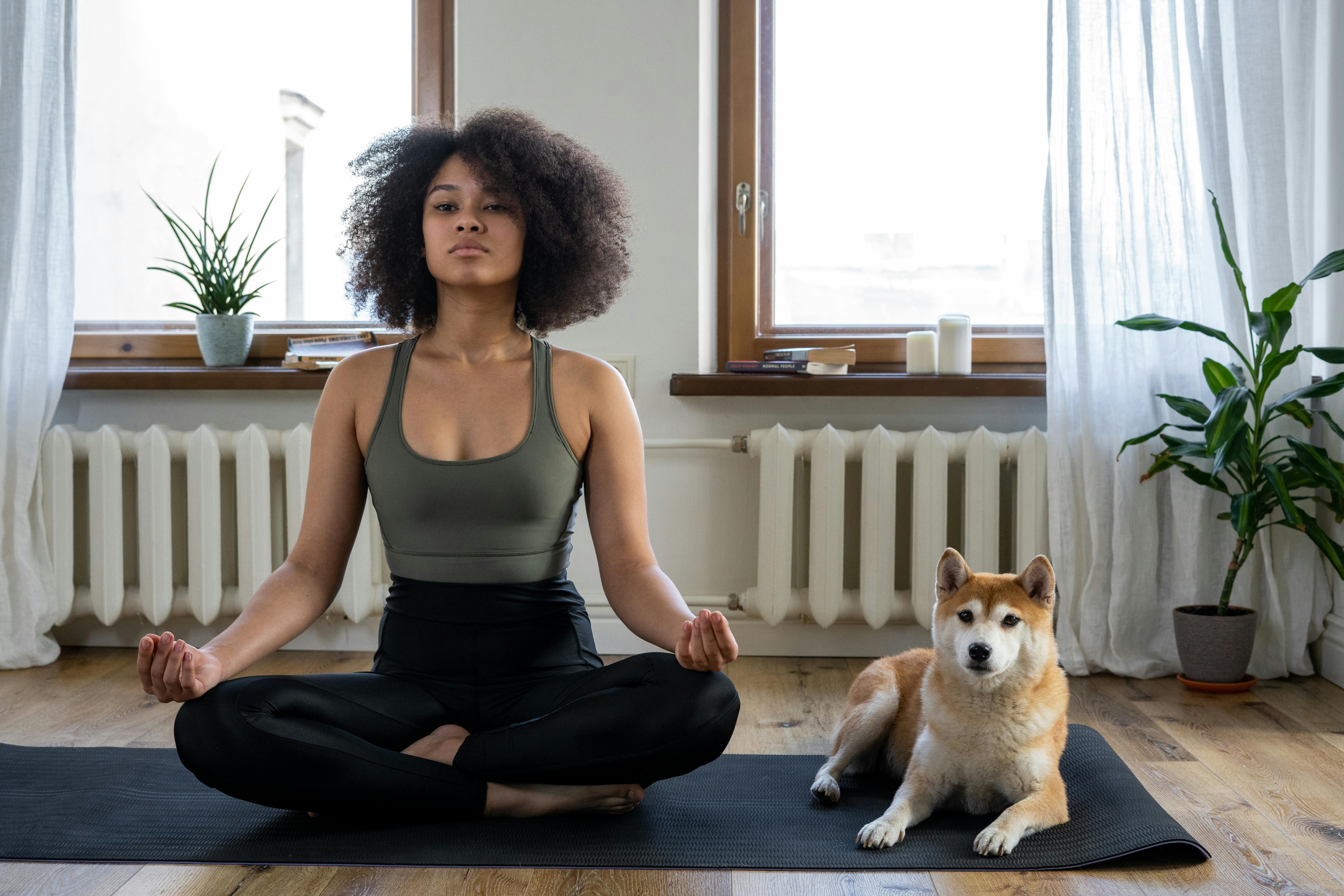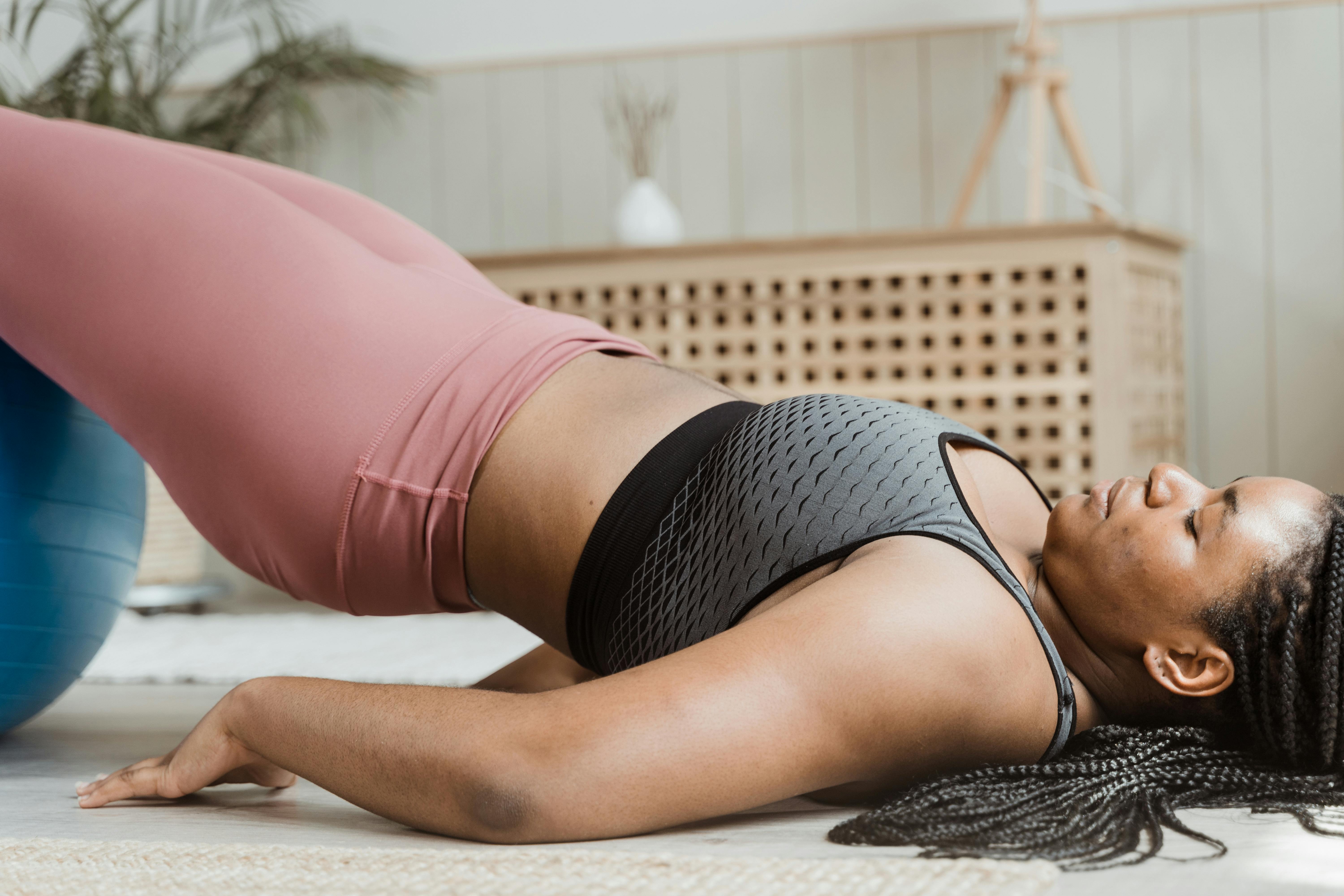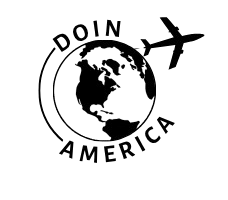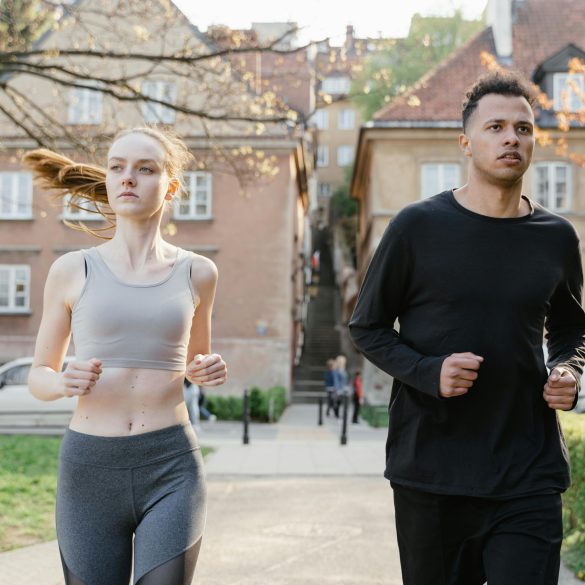Dominican Republic Home Fitness Guide: Easy Routines & Simple Gear
Let me be clear right out of the gate: the Dominican Republic isn’t just a paradise for beachgoers—it’s a place where wellness is woven into daily life, often in delightfully simple and spontaneous ways. Over the last decade, I’ve worked with Dominican families and newcomers to fitness, helping them turn tight spaces and minimal resources into real results—a philosophy I absolutely love. Starting a home fitness routine here doesn’t require extravagant equipment, intimidating gym jargon, or expensive coaching. All it takes is a dash of local spirit, a genuine willingness to move, and the clever use of a few pieces of affordable gear you can snag at the local colmado or market.
Here’s the real kicker: Most folks underestimate how much fitness is already part of everyday Dominican life. Between the dancing, the daily walks for fresh produce, and even the impromptu baseball games on Sundays—it’s all training, just wrapped in cultural flavor. The challenge? Turning all that innate movement into a consistent, measurable routine that delivers long-term wellness, strong bodies, and boosted mental health—without the overwhelm or guilt trips so common in “big city” fitness conversations.
Dominicans rank among the most active Caribbean populations—not by spending hours at the gym, but by infusing daily life with movement: walking for errands, gardening, dancing, and community sports.1
Funny thing is, I used to think home fitness meant sacrificing authenticity for uniformity—just another set of cookie-cutter “global” routines pasted over local lifestyles. Turns out, it’s the exact opposite. The best routines are those built on the real pace, climate, and rhythms of island life. So this isn’t some soulless workout guide—it’s a practical playbook, rooted in Dominican reality, with real-world steps, sensory-rich advice, and budget-friendly gear tips anyone can apply, whether you live in Santo Domingo, Puerto Plata, or a rural town with more mango trees than traffic lights. Let that sink in for a second.
What You’ll Learn
- Why simple gear works so well in Dominican homes
- Daily routines you can start in five minutes—even if you’re low on energy or time
- How to avoid common mistakes beginners make (I’ve made them all!)
- Stories from Dominican families who’ve made fitness part of their daily rhythm
- Tips to boost accountability, avoid boredom, and actually enjoy the process
The Magic of Simple Fitness Equipment
Ever watched a Dominican grandmother take her daily walk, swinging a couple of water bottles instead of dumbbells? That’s local innovation 101. For beginners, simplicity is a superpower. Forget bulky machines or fancy trackers—some of the most effective gear for home workouts are just:
- A sturdy chair (for step-ups, dips, and balance work)
- A pair of water bottles or rice bags as weights
- A resistance band (easy to pack and use anywhere)
- A rolled beach towel (for floor exercises and stretching)
- Old t-shirts for makeshift yoga mats or grip wraps
Here’s my honest take: Equipment should never be a barrier—it’s a tool. I remember giving a workshop in Santiago where the most advanced participants used pots filled with sand as kettlebells. No one lost results or motivation because they didn’t have imported gear. In fact, it sparked more creativity, more personal pride. The everyday objects in Dominican homes are perfectly suited for functional training—a style that focuses on natural movements like squatting, twisting, reaching, and lifting.
Getting Started: The First 7 Days
Here’s where most beginners stumble: analysis paralysis. Obsessing over perfect plans, complicated apps, or long-term transformation goals. Speaking from experience, simplicity always wins. My advice? Start small, celebrate every micro-habit, and let local culture guide your practice. Here’s a quick 7-day blueprint (adapted for Dominican homes and schedules):
- Day 1: 10-minute walk inside/outside the home, swinging water bottles for gentle resistance.
- Day 2: Chair squats (sit-to-stand) — 3 sets of 10, rest as needed.
- Day 3: Basic stretching with a beach towel, 5 major muscle groups.
- Day 4: Upper body pushups (knees or wall), 2 sets of 8.
- Day 5: Dance-based cardio: 10-15 minutes of merengue or bachata—YouTube counts!
- Day 6: Step-ups using a sturdy chair or stairs—2 sets of 10 per leg.
- Day 7: Rest or slow walk, mindful breathing, celebrate your wins.
Quick tip: Even if you skip a day (realistically, everyone does!), keep going without guilt. The rhythm matters more than the record. The point is to make fitness fun, locally flavored, and, above all, sustainable.
Daily Routines for Every Level
From my experience coaching Dominican beginners, I’ve learned that routines should be as flexible as the island weather—one minute it’s sun, the next it’s a tropical downpour. So, how do you create a home fitness routine that’s genuinely doable, enjoyable, and fits any skill level? You anchor everything in daily life. Let’s break down a set of core routines, each scalable from absolute beginner to “I’ll try something harder next week” with local context and specifics. You’ll see some simple adaptations I had to make for clients juggling kids, work, and unpredictable power outages (yes, really).
Beginner-Friendly Full-Body Routine
- Warm-Up: Walk briskly around your space for 3 minutes.
- Lower Body: Chair squats, 2 sets of 10 reps.
- Upper Body: Wall pushups, 2 sets of 8 reps.
- Core: Seated knee lifts, 2 sets of 12 reps.
- Finish: Dance to 1 merengue track.
All of these can be done without shoes—just watch out for slippery tiles.
Quick “No Excuse” Circuit (5 minutes)
- 15 jumping jacks
- 10 chair dips
- 8 water bottle curls per arm
- 20 seconds plank (hold with towel under elbows)
If you miss a round, just laugh it off—every little bit counts.
Intermediate: Add Resistance & Layer Local Moves
Once you’re comfortable, add a resistance band or use heavier water bottles. Integrate island-style cardio: jog in place while listening to local radio, do squats during ad breaks, or even lift mango baskets for extra weight. At a recent workshop, we tried balancing exercises with plantain bunches—way more fun (and harder) than anything in a standard gym!
A lot of Dominican homes are short on space: multi-generational living, narrow courtyards, and kitchens doubling as gyms. That’s not a limitation—it’s an opportunity. Use doors for resistance bands, move chairs for step-ups, do standing stretches in bedrooms. Actually, in my neighborhood, there’s an elderly couple who do wall pushups every morning while waiting for breakfast coffee.
| Routine | Beginner | Intermediate | Adaptation |
|---|---|---|---|
| Squats | Chair sit-to-stand | Weighted squats (water bottles) | Add band, go slower |
| Pushups | Wall pushups | Standard/pike pushups | Add reps, use stairs |
| Core | Seated lifts | Leg raises | Add twist with towel |
| Cardio | Merengue dance | Interval dancing | Use stairs, add jumps |
Important: Progress is non-linear—sometimes weather delays you, sometimes motivation dips (especially on cloudy days when baseball isn’t on TV). Pause here and consider: What local rhythms could you build into your fitness practice? Can you involve neighbors, kids, or even pets? The most powerful advances aren’t in the routines—they’re in the community-driven tweaks.
Local Adaptations: Climate, Space, and Culture
Dominican climate can be both a blessing and a challenge for home fitness. Humidity means you sweat more, which is great for detox but tough for comfort. My tip? Schedule workouts early mornings or late evenings, when temperatures are cooler. Use fans, open windows, and light clothing. I used to think working out midday was a badge of honor—now I just call it a rookie mistake. For families living in smaller homes, vertical space (walls, doors) becomes an asset for band work and stretches. Outdoor patios offer great spots for brief cardio bursts or fresh-air yoga.
Cultural motivation matters. Dominican music is a proven energizer; playlists featuring Juan Luis Guerra or Romeo Santos make routines fly by. Many beginners I’ve coached find it easier to stick to their routines by setting up micro-fitness challenges with siblings or neighbors—who did the most squats today, who danced the longest? It’s never just about sweat—it’s about celebration.

Sticking With It: Motivation & Accountability
This is where most home fitness projects fall apart—somewhere between week two and “I’ll start again next month.” Here’s what I’ve learned the hard way, both personally and with Dominican clients: Success relies on three things—routine, support, and genuine enjoyment (not guilt or pressure). Maybe you struggle with motivation because you compare your progress to relatives who ran marathons. Or maybe you lose steam because life “gets in the way” (it always does). Actually, let me clarify: If you fall off three times this month, but restart four, that’s winning.
Top Dominican Motivation Hacks
- Share your routine with family or neighbors—for real accountability.
- Pick one local song for every workout; it becomes a celebration, not a chore.
- Set “movement alarms”—when you hear your favorite track, do 30 seconds of activity.
- Track progress with simple charts (whiteboards, fridge notes) instead of complicated apps.
- Reward yourself with local treats after consistent weeks, like fresh coconut water—pure, natural, and good for recovery.
- Take photos of yourself in action: visual feedback is super motivating in Dominican homes.3
Here’s a personal blunder: I once made the mistake of planning daily routines for an entire month (everything meticulously color-coded), only to pivot after a single week when power outages, unexpected family visits, and a new kitten changed every schedule. What really strikes me, looking back, is how flexibility and humor are more effective than rigid discipline. I go back and forth on this, but my current thinking: laughter keeps you moving; guilt stops you cold.
Community Power: Turning Accountability Into Joy
Dominican households thrive on community dynamics: shared dinners, evening domino matches, spontaneous neighborhood dance-offs. Those bonds motivate action. I always recommend beginner fitness projects to involve as many people as possible—whether sharing routines on WhatsApp, challenging family members for step challenges, or joining local online groups (Facebook and Instagram communities are massive here). According to a national wellness survey, group accountability increases long-term fitness adherence by up to 60%.4
What’s my honest take? Solo routines have their place but nothing beats a little friendly competition. Even chatting about your setbacks over coffee helps you restart. The real benefit isn’t just more movement—it’s more connection, more smiles, and, honestly, fewer “I’ll start tomorrow” moments.
Key Resources Every Beginner Needs
You don’t need to hunt for obscure “expert” blogs. Start with resources rooted in familiar context. Here are my go-tos—each chosen because they mix authentic regional relevance, clear instructions, and practical adaptability for Dominican homes.
- YouTube: Search “ejercicios en casa Dominicana” for local instructors
- Instagram: #FitnessDominicano for motivation and challenge ideas
- Government health portals: Ministry of Public Health’s wellness section5
- Neighborhood WhatsApp groups—great for accountability and daily reminders
- Apps: “MyFitnessPal” and “Strong” for easy tracking (both available in Spanish)
- Local libraries: Guides like “Wellness in the Caribbean Home” by María del Carmen Cruz6
Beginner’s Troubleshooting Table
| Common Issue | Quick Solution | Local Adaptation |
|---|---|---|
| Space too small | Use vertical movements, move furniture | Stretches in hallway or patio |
| Weather issues | Do indoor short routines | Dance in living room, towel workouts |
| Low motivation | Find a buddy or song | Local playlist challenges |
| No gear | Use home objects | Water bottles, old t-shirts, rice bags |
Honestly, I have to say, the key is improvisation—not perfection. That’s what keeps people moving here, and that’s what will keep you on track too.
Bringing It All Together: The Dominican Path to Sustainable Home Fitness
What I should have mentioned first—now that I’m wrapping up—fitness in the Dominican Republic is less about chasing six-pack abs and more about savoring healthy movement, building community, and celebrating small wins. I have to revise my earlier point: you don’t just start for the sake of exercise; you start to improve mood, mental clarity, and the quality of everyday life. The real advantage, looking ahead, is that home fitness becomes an anchor, especially during seasonal swings, holidays, or unexpected changes (pandemics, anyone?).
Let’s pause to appreciate the bigger picture. Dominican resilience comes from resourcefulness: using whatever’s on hand to create change. That philosophy is the absolute foundation of home fitness here. It isn’t about expensive solutions or external validation—it’s about practical, joyful action using spaces, routines, and motivations unique to every household. Now, as you’re reading this, maybe you’re already picturing your living room as a makeshift gym, or your next batch of laundry as resistance bands. That’s the magic.
Dominicans spend up to 40% more time outdoors than the global average—meaning home fitness routines often include patios, courtyards, or nearby parks.7
Your Next Steps: Dominican Fitness Action Plan
- Pick one routine from this guide and schedule it for tomorrow morning.
- Invite a family member, friend, or neighbor to join you—share the experience.
- Track your progress using a simple notebook or wall chart.
- Celebrate every milestone—even small ones—with a local treat or music jam.
- Check in weekly, adjust routines to fit your changing needs and moods.
This excites me since movement truly transforms the home. Real change comes from action, adaptation, and laughter. So, whether you’re just starting or picking up after a break, know that you’re joining a legacy of resourceful, resilient, and joy-driven Dominican home fitness.
Quick Recap: Dominican Home Fitness Essentials
- Simple equipment works. Water bottles, towels, chairs—all fair game.
- Embrace daily movement through routines anchored in local music and culture.
- Adapt to climate, space, and family dynamics—improvisation beats perfection.
- Connect with others for sustainable success and genuine enjoyment.
- Track, celebrate, and adjust habitually—progress builds over time.
References



